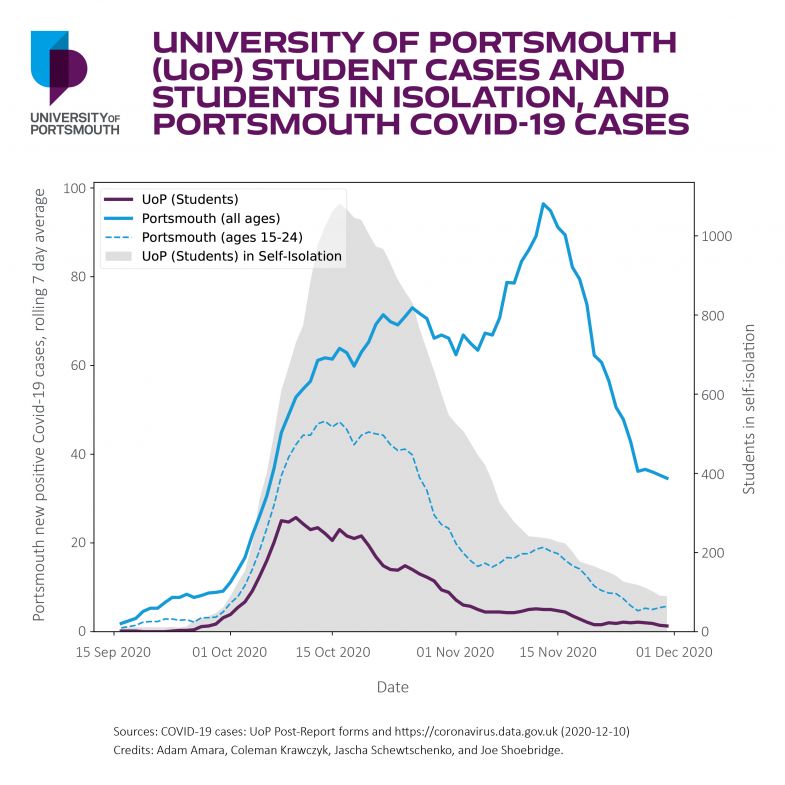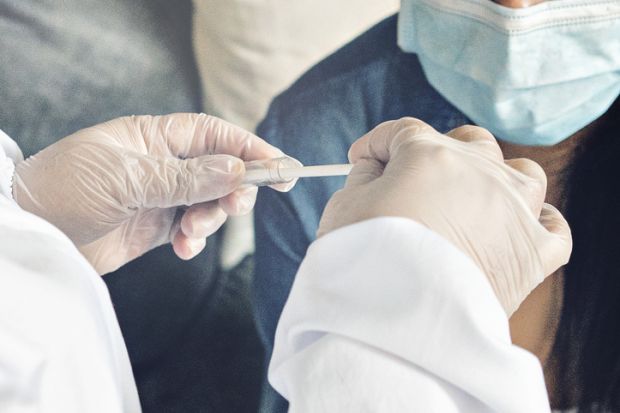There is no evidence that university students are an ongoing source of Covid-19 infections in their local communities, according to an analysis of data from Portsmouth.
The University of Portsmouth plotted infection numbers in the city using its own and publicly available data. It found that the number of positive Covid-19 cases among students correlated with those in the general population until 10 October. However, since then, cases among students have been declining, whereas infections among the public continued to climb until mid-November.
Last week, only 0.2 per cent of the several thousand students at the university who were tested received a positive result. The institution has been testing asymptomatic students since September.
Graham Galbraith, vice-chancellor of the University of Portsmouth, who presented the data in a blog published by the Higher Education Policy Institute on 11 December, says the figures show that “even if the city-wide rise in infections was caused by students, it was soon brought under control”.
“Why? We believe the answer is our own testing along with effective trace and support measures for isolating students,” he writes.
“Of course, it remains possible that students continued to infect the wider population but, if so, it is mysterious how they managed to do this without infecting each other.
“One has to be very careful about drawing inferences from limited data but the graph [below] shows that there is no evidence of students being an ongoing source of infection spread in Portsmouth. I suspect many other universities will be able to tell a similar story.”

There has been much attention globally on concerns that reopening campuses has caused increases in infection rates in university towns and cities.
US research, published in September, concluded that the number of campus-related infections would translate under US mortality averages to about 90 additional deaths each day. Meanwhile, a Canadian study, based on modelling, predicted that the return of students to campuses in the country could lead to a doubling of Covid-19 cases in university towns, although it added that regular testing would significantly reduce the number of infections.
In the UK, there were concerns at the beginning of the academic year that the rapid increase in the number of Covid-19 cases among student populations would poison town-gown relations, with one local councillor telling Times Higher Education that there was a perception that students had caused the Covid-19 infection rate to rise locally.
Professor Galbraith said the Portsmouth figures were important in the context of the government guidance calling for institutions to stagger the return of students to campuses after Christmas over five weeks, in a bid to limit the spread of Covid-19.
“We should not focus on the process of students’ return to the exclusion of what happens afterwards,” he said.
“Until a vaccine becomes available for everyone, regular testing and support for isolating students is probably a more effective way to reduce the spread of Covid than altering the days students move from A to B.”
Hepi director Nick Hillman said the data showed that “even some of the best forecasts and modelling were wrong”.
“Most students are sensible, and this evidence suggests that, after the initial start of the academic year, they have generally strived to reduce the spread of the virus. I salute students and staff for the actions they have taken in the most difficult term in living memory,” he said.
Register to continue
Why register?
- Registration is free and only takes a moment
- Once registered, you can read 3 articles a month
- Sign up for our newsletter
Subscribe
Or subscribe for unlimited access to:
- Unlimited access to news, views, insights & reviews
- Digital editions
- Digital access to THE’s university and college rankings analysis
Already registered or a current subscriber? Login








